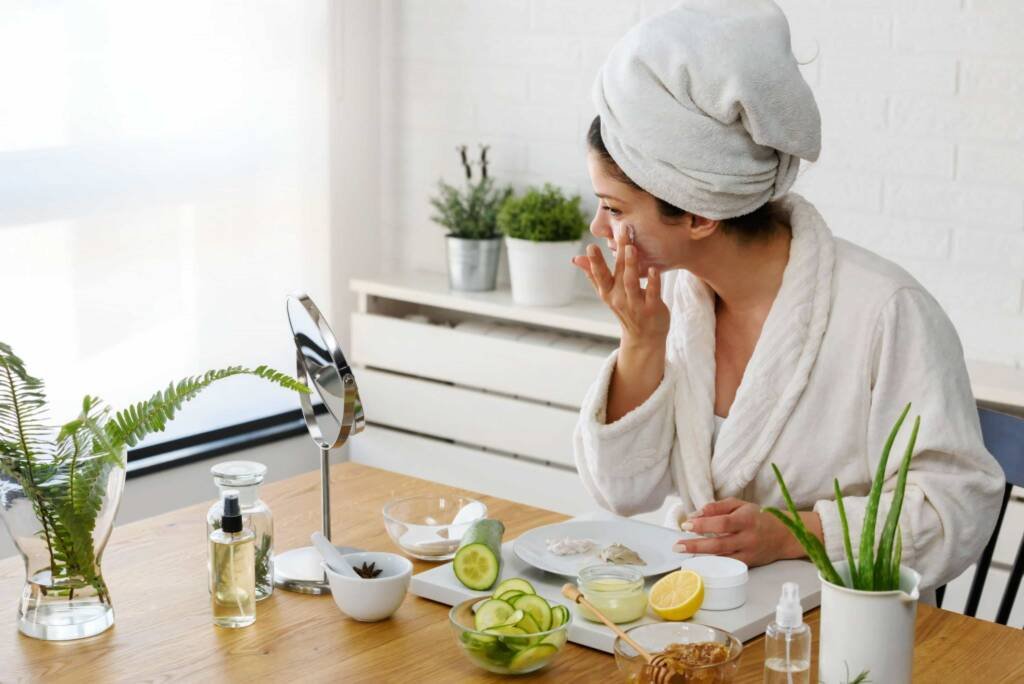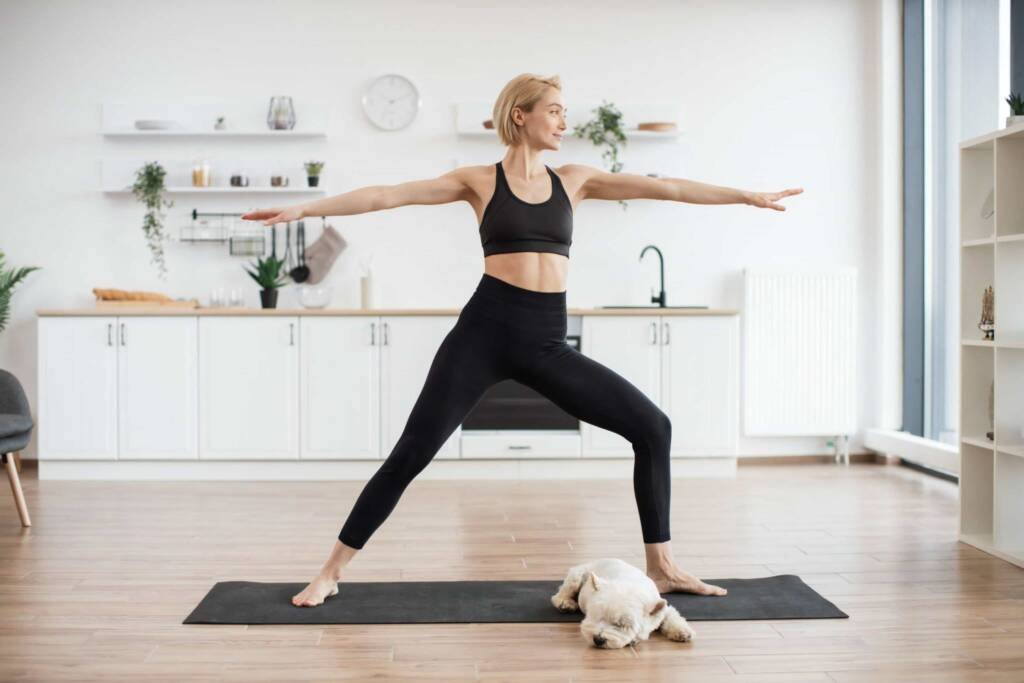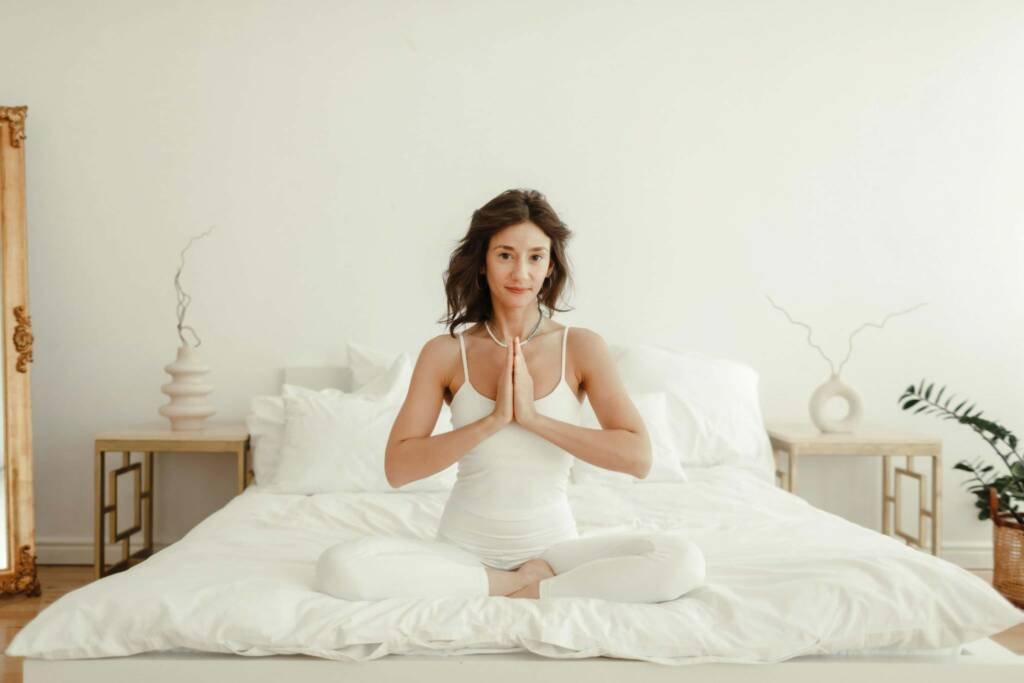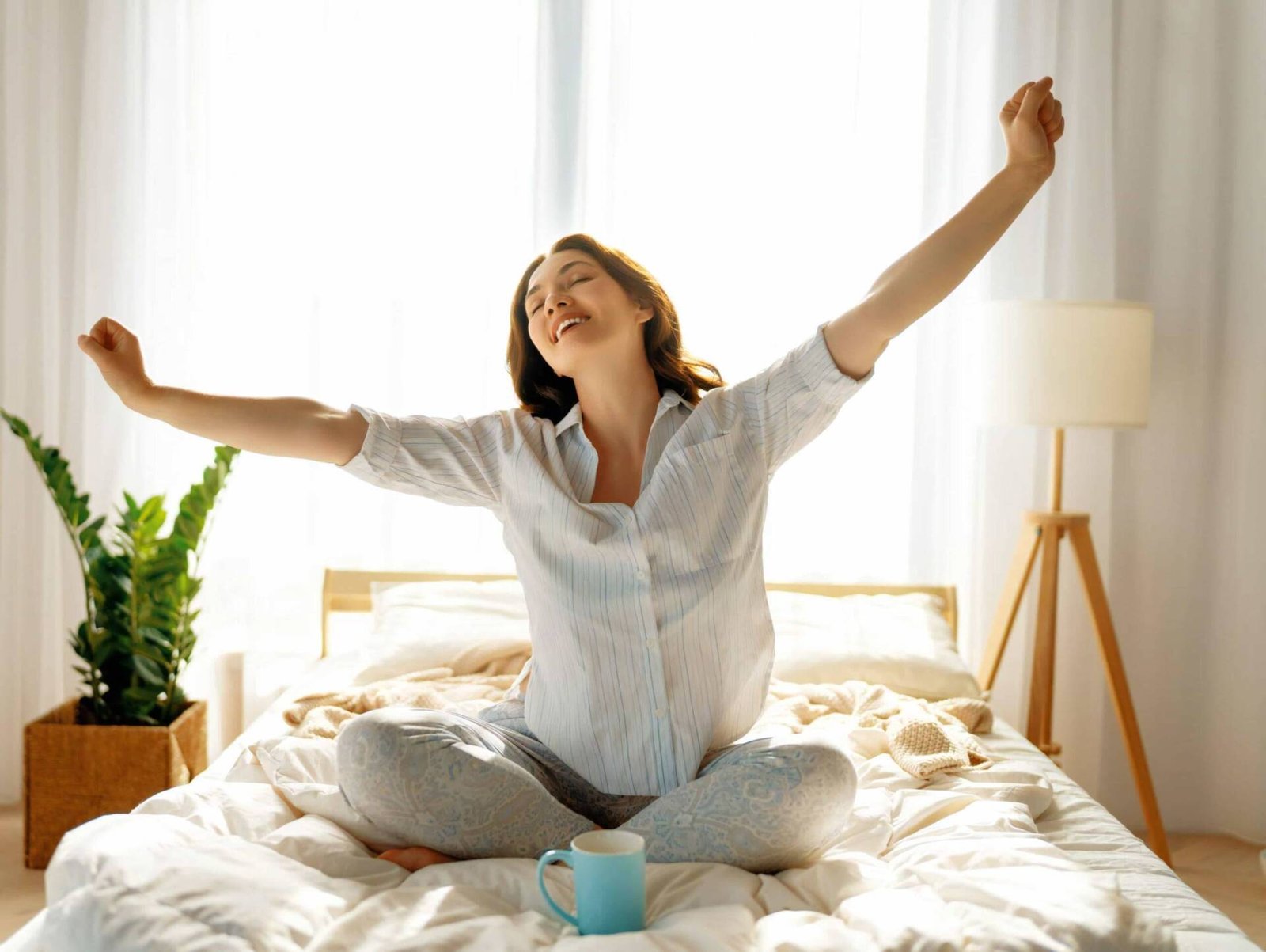Our appearance and mood are inherently interconnected, influencing one another in ways that significantly impact our overall well-being. Maintaining a well-groomed, tidy appearance can often boost our self-esteem and mood. Investing time and effort into looking our best makes us feel more confident and optimistic about ourselves. Similarly, our mood can also reflect on our appearance. When we’re feeling down or stressed, it might show in our overall demeanor and physical appearance. Therefore, taking care of our appearance can enhance our mood and vice versa.
Table of Contents
The importance of feeling good about oneself cannot be overstated. It is the cornerstone of a positive self-image and an essential element of mental and emotional well-being. When we feel good about ourselves, we are likelier to engage in healthy behaviors, set and achieve personal goals, and maintain positive relationships.
We experience an intrinsic sense of worthiness that fuels our ambition and motivates us to strive for success. Furthermore, feeling good about oneself enhances resilience, equipping us to navigate life’s challenges better and recover from setbacks more quickly. Thus, fostering a positive self-perception is essential for overall well-being and personal growth.
Quick Fixes for Your Appearance:

A radiant appearance is primarily a reflection of our inner well-being. However, sometimes, we all need quick fixes to look our best, especially on hectic days. Here are some tips:
The Importance of Personal Grooming.
Personal grooming plays a pivotal role in how we present ourselves to the world and how we perceive ourselves. It’s a reflection of self-respect and self-care. Maintaining a consistent grooming routine demonstrates our commitment to preserving our health, cleanliness, and overall attractiveness. This routine, in turn, can boost our self-esteem, making us feel more confident and optimistic.
Moreover, personal grooming can also influence the way others perceive us. A well-groomed appearance often communicates professionalism, attention to detail, and respect for oneself and others. In essence, personal grooming is a potent tool in shaping our self-image and social interactions.
Tips for Skincare Routine:

A well-defined skincare routine can significantly improve the health and appearance of your skin. Here are some critical steps to consider:
- Cleansing: Start your day by washing your face with a gentle cleanser that matches your skin type. This helps to remove dirt, excess oil, and impurities on the skin’s surface.
- Toning: Using a toner post-cleansing can help balance the skin’s pH levels, hydrate your skin, and prepare it for the next steps of your routine.
- Moisturizing: Regardless of your skin type, moisturizing is essential. It helps hydrate your skin and lock in moisture, leaving it soft and supple.
- Sun Protection: Apply broad-spectrum sunscreen daily, even on cloudy days, to protect your skin from harmful UVA and UVB rays.
- Exfoliation: Exfoliate your skin 1-2 times weekly to remove dead skin cells and promote skin renewal. This step can result in brighter and smoother skin.
- Night Care: Use a nourishing night cream or serum before going to bed. Nighttime is when your skin undergoes repair and regeneration, so providing it with the proper nutrients is crucial.
Remember, consistency is vital when it comes to skincare. Moreover, understanding your skin type and its needs will help you choose the right products and tailor your best regimen.
Easy Hair Care Tips:

Maintaining healthy, vibrant hair does not have to be a daunting task. Here are a few easy tips to incorporate into your hair care routine:
- Shampooing: Don’t shampoo your hair every day. Daily shampooing can strip your hair of its natural oils, leaving it dry and prone to damage. Aim to shampoo 2-3 times a week based on your activity level and your hair type.
- Conditioning: Always condition your hair after shampooing. Conditioner helps replenish the nutrients your hair loses during shampooing, leaving it softer and shinier.
- Heat Protection: Regular use of heat styling tools can lead to dryness, breakage, and split ends. Always use a heat protectant before blow drying, straightening, or curling your hair.
- Regular Trimming: Get regular trims to keep your hair looking fresh and healthy. Trimming helps to reduce split ends and promotes healthier hair growth.
- Healthy Diet: Eating a balanced diet rich in vitamins, minerals, and proteins is essential for hair health. Foods high in omega-3 fatty acids, vitamin A, B vitamins, and proteins can help promote healthier, shinier hair.
- Stay Hydrated: Just like your skin, your hair needs to stay hydrated. Drinking plenty of water throughout the day can help maintain the moisture balance of your scalp and hair, preventing dryness and brittleness.
Remember, different hair types require different care routines. Understanding your hair type will help you choose the right products and create a care routine that best suits your hair’s specific needs.
Wardrobe Overhaul: Dressing for Confidence.

The clothes you wear significantly affect how you feel about yourself. Dressing well is not just about looking good; it’s about expressing individuality and boosting confidence. A wardrobe overhaul doesn’t necessarily mean buying a whole new set of clothes; instead, it means identifying what pieces make you feel your best and focusing on those.
- Understand Your Body Type: Knowing your body type helps you choose clothes that flatter your unique shape and accentuate your best features.
- Invest in Basics: High-quality basics like a well-fitted white tee, a tailored blazer, or a pair of dark jeans can serve as versatile staples in your wardrobe.
- Choose the Right Colors: Colors can influence our mood and self-perception. Identify which colors make you feel confident and incorporate them into your wardrobe.
- Comfort is Key: Confidence often comes from comfort. Opt for clothes you feel comfortable in that match your lifestyle and personal style.
- Accessorize Wisely: Accessories can completely transform an outfit. Choose pieces that complement your outfits and express your personality.
- Maintain Your Wardrobe: Keep your clothes in good condition. Regular laundering, mending, and ironing can keep your clothes looking their best, boosting your confidence when you wear them.
Remember, confidence comes from within, and your clothes are just an outward expression of that inner confidence. Dress for your pleasure and comfort. When you feel good in what you’re wearing, that confidence radiates outward, making a lasting impression on those around you.
Choosing The Right Clothes for Your Body Type.

Understanding your body type is crucial in finding clothing that fits and flatters. Here’s a simple guideline to help you choose the best clothing for your body shape:
- Apple-shaped body: Characterized by a heavier upper body with a wider torso and broader shoulders. It’s best to choose clothes that draw attention away from your waist. V-neck tops or dresses, A-line dresses, and wrap dresses are good choices.
- Pear-shaped body: This body type has a narrower upper body with fuller hips and thighs. Opt for clothes that add volume to your upper body, like boat necks, square necks, and cowl necks. Layered tops, wide-legged pants, and straight skirts are also flattering.
- Rectangle-shaped body: If your waist, hip, and shoulder widths are similar, you will likely have a rectangle body shape. Create curves with off-shoulder or boat-neck tops, high-waisted pants or belts, and pencil skirts or skater dresses that cinch at the waist.
- Hourglass-shaped body: If your bust and hips are approximately the same width and you have a well-defined waist, you’ve an hourglass shape. Highlight your curves by choosing clothes that draw attention to your waistline. Wrap dresses, high-waisted skirts, and skinny or boot-cut jeans are excellent choices.
- Inverted triangle body: With a broader bust and narrower hip, choose clothes that add volume to your lower body and draw attention away from the width of your upper body. V-neck tops, wide-leg pants, and full skirts can create a balanced look.
Remember, these are just guidelines, and style is subjective. Wear what makes you feel confident and comfortable, as confidence is always the best thing you can wear.
Importance of Wearing Clothes That You Feel Comfortable in.

The significance of wearing clothes that you feel comfortable in must be considered. Comfort is as important as style, if not more. When we are comfortable in what we wear, we project an air of self-assuredness and authenticity. It enables us to move freely, without constraints or unease, allowing us to focus on our daily tasks and interactions.
Moreover, wearing comfortable clothes can also reflect our style, and it is a form of self-expression. Remember, fashion is about more than just following the latest trends—it is about finding your identity, expressing yourself, and feeling good in your own skin. So, always prioritize comfort when choosing your attire because you’re naturally more confident when you’re comfortable.
The Value of Regular Exercise.

Regular exercise offers a wealth of benefits that extend far beyond physical health. It serves as a powerful tool to boost mental well-being, reduce stress levels, and improve overall quality of life. From enhancing cardiovascular health and promoting weight management to stimulating the release of endorphins – “feel good” hormones that elevate mood and energy – the value of regular exercise cannot be overstated.
Moreover, it fosters better sleep, bolsters immune function, and can improve cognitive abilities, including memory and concentration. Individuals can also experience enhanced self-esteem and confidence by setting and reaching fitness goals. Despite these significant benefits, remember that you must find a form of exercise you enjoy ensuring lasting commitment and consistency.
Easy and Quick Exercises to Stay in Shape:

Staying in shape doesn’t require hours of intense workout sessions; you can do several quick and easy exercises at home or in a park. Here are a few:
- Jumping Jacks: This excellent cardio workout engages various muscle groups. Aim to do three sets of 20.
- Push-ups: An effective upper body workout. Start with ten and gradually increase the number as your strength improves.
- Squats: Great for building lower body strength, particularly the thighs and buttocks. Try to perform three sets of 15.
- Lunges: Another excellent workout for the lower body focusing on the thighs and hips is lunges. Aim for ten lunges on each leg.
- Planks: This exercise works the whole body, especially the core. Start by holding the plank position for 30 seconds and gradually increase the time.
- High Knees: This is a high-intensity cardio exercise that also strengthens the legs. Aim for three sets of 20.
- Mountain Climbers: A full-body workout that combines cardio with muscle strengthening. Start with ten reps on each side.
Always warm up before you start exercising to prepare your body for the workout and cool down afterward to help your body recover. Combine these exercises with a balanced diet for optimal health and fitness.
Quick Fixes for Your Mood:

We all have days when we feel down and stressed. When these days come, don’t despair; try quick fixes to help you shift into a better mood.
Importance of a Healthy Diet on Mood.

The food we consume can significantly impact our mood and overall mental health. A well-balanced diet rich in fruits, vegetables, lean proteins, healthy fats, and whole grains provides essential nutrients that play a vital role in the brain’s functioning. For instance, Omega-3 fatty acids found in fish and flaxseeds contribute to brain health, influencing mood and reducing the risk of depression. Similarly, complex carbohydrates in whole grains can stabilize blood sugar levels, improving mood and energy.
Additionally, certain foods like dark chocolate, bananas, and berries are known to boost endorphin levels, often referred to as “feel-good” hormones. Conversely, a diet heavy in processed foods, refined sugar, and unhealthy fats can lead to mood swings, energy crashes, and an increased risk of mental health disorders. Thus, maintaining a healthy diet is vital for physical and psychological well-being, improving mood and emotional stability.
Several nutritious foods are known for their mood-boosting properties:
- Fatty Fish: Rich in Omega-3 fatty acids, fatty fish like salmon and tuna are known to improve brain health and mood.
- Dark Chocolate: It increases brain serotonin and can improve mood and happiness.
- Bananas: This fruit is rich in vitamin B6, which helps synthesize mood-enhancing neurotransmitters like dopamine and serotonin.
- Berries: Strawberries, blueberries, blackberries, and raspberries are rich in antioxidants and known to boost mood.
- Nuts and Seeds: They are high in plant-based proteins, healthy fats, and fibers, improving mood and maintaining energy levels.
- Coffee: Caffeine increases alertness and attention; its antioxidants can help combat inflammation.
- Beans and Lentils: Rich in B vitamins, which help improve mood by increasing levels of neurotransmitters like serotonin, dopamine, norepinephrine, and gamma-aminobutyric acid (GABA), which are essential for regulating mood.
- Whole Grains: Foods like oats, brown rice, and whole grain bread are good sources of complex carbohydrates, which help regulate mood and maintain energy levels.
Remember, a balanced diet contributes to overall mental and physical health. Enjoy these foods as part of a balanced, varied diet.
The Impact of Physical Activity on Mood.

The impact of physical activity on mood is profound and multifaceted. Engaging in regular exercise can stimulate the production of endorphins, often referred to as the body’s “feel-good” hormones, which naturally elevate mood and help combat stress and anxiety. Exercise promotes better sleep quality, significantly enhancing mood and overall mental well-being.
Moreover, the achievement of fitness goals can boost self-esteem and confidence, contributing to a more positive attitude. Whether it’s a brisk walk around the block, a vigorous gym session, or a calming yoga practice, physical activity can be a powerful tool in mood regulation and mental health support.
To maximize the benefits of physical activity on mood, finding an exercise that you enjoy and can stick with is essential. If going to the gym isn’t your cup of tea, try out a new sport or activity; countless options are available to cater to different preferences. Additionally, engaging in physical activity outdoors has its own set of benefits.
Exposure to natural sunlight and fresh air can help improve mood, reduce stress, and boost energy levels. Whatever your choice of workout may be, remember to start slowing and gradually increase the intensity; this will ensure that you’re not overloading your body or giving up too soon due to boredom. And remember – a healthy dose of self-care is also essential!
You can easily integrate quick exercises into your daily routine to uplift your mood and enhance your well-being. Here are five simple exercises that can help lift your spirits:
- Deep Breathing: Sit comfortably, close your eyes, and take deep, slow breaths. This exercise can help reduce stress and induce relaxation.
- Jumping Jacks: This full-body exercise can stimulate endorphin release, helping to elevate your mood. Aim for three sets of 10.
- Quick Walk: A brisk 10-minute walk, especially outdoors, can have significant mood-boosting benefits.
- Dancing: Put on your favorite tunes and dance around for a few minutes. Dancing can help release tension and make you feel happier.
- Yoga: Practicing yoga can help increase your body’s production of serotonin, improving your mood. Simple poses like the downward dog or child’s pose can be particularly beneficial.
Remember, the most important thing is to find an activity you enjoy, as you’re more likely to stick with it and reap the mood-boosting benefits.
The Role of Mindfulness and Meditation in Improving Mood.

The significance of mindfulness and meditation in elevating mood cannot be emphasized enough. Practicing mindfulness involves staying focused on the present moment non-judgmentally, while meditation is a more structured practice that often incorporates mindfulness as a core component. Both techniques can result in improved mood and reduced anxiety. They work by slowing down the mind, reducing the mental ‘noise’ and negative thinking that can lead to mood swings or depression.
Meditation has been found to primarily stimulate the production of ‘feel-good’ hormones such as endorphins and serotonin while reducing cortisol levels, the hormone associated with stress. On the other hand, mindfulness can help in mood regulation by promoting acceptance of the present situation and reducing rumination about past events or future worries. Incorporating mindfulness and meditation into your routine can be a powerful strategy for mood improvement and overall mental well-being.
Here are a few simple mindfulness exercises that can be easily incorporated into your daily routine:
- Mindful Breathing: This exercise focuses on your breath, inhalation, and exhalation. You can do this while standing, sitting, or lying down in a comfortable position.
- Mindful Observation: Choose an object in your visual field and focus on watching it for a minute or two. This could be a pen, a spot on the ceiling, a tree outside – anything.
- Mindful Awareness: This involves consciously focusing on what you are sensing without interpretation or judgment. You can do this with any task or activity like eating, showering, walking, or listening to music.
- Mindful Listening: This exercise involves listening to a piece of music or natural sounds like rainfall or bird song. The key is to listen without trying to identify the instrument, the artist, or the genre of music.
- Mindful Immersion: This involves becoming intensely aware of one activity or task, like folding laundry, washing dishes, or brewing tea. Instead of rushing through and viewing it as a task, take your time and immerse yourself fully in the process.
Remember, the aim of these exercises is not to achieve any state but to pay attention to the present moment without any judgment. As you grow in mindfulness, you will find peace in simply being present.
Meditation is an ancient practice that has been used for centuries to promote relaxation, enhance self-awareness, and foster spiritual growth. It involves specific, structured techniques to focus the mind and relax the body, often focusing on a particular object, thought, or activity, such as breath control. Regular practice of meditation can promote calmness and mental clarity, improve physical health, and even cultivate qualities like patience and compassion.
There are numerous forms of meditation, including mindfulness meditation, transcendental meditation, and loving-kindness meditation, each with unique approaches and benefits. Regardless of the specific method, the essence of meditation remains the same – redirecting and calming the mind to bring about a state of relaxation and tranquility.
Conclusion
In conclusion, the journey to looking good and feeling great is multifaceted, encompassing physical conditioning and mental and emotional well-being. The interplay of regular physical activity, mindfulness, and meditation form the trifecta for overall wellness. Physical activities boost your health, enhance your mood, and contribute to a better appearance. Meanwhile, mindfulness and meditation provide much-needed tranquility in our fast-paced lives, helping to manage stress, keep us in the present, and improve our overall mood. Incorporating these practices into our daily routine can lead to a more balanced and fulfilled life. Remember, the path to wellness isn’t about drastic changes but consistent, small steps toward a healthier, happier you.
I encourage you all to try these simple exercises and mindfulness techniques. Remember, it doesn’t have to be a giant leap, but small, consistent steps in the right direction can lead to significant changes. Don’t get disheartened if you don’t see immediate results, as the transformation is gradual but impactful. Start with what feels most comfortable and enjoyable, and gradually incorporate more activities and practices. Your journey towards better physical, mental, and emotional health begins with that first step. Embrace the process, celebrate your progress, and, most importantly, be patient with yourself. You got this!






10 Comments